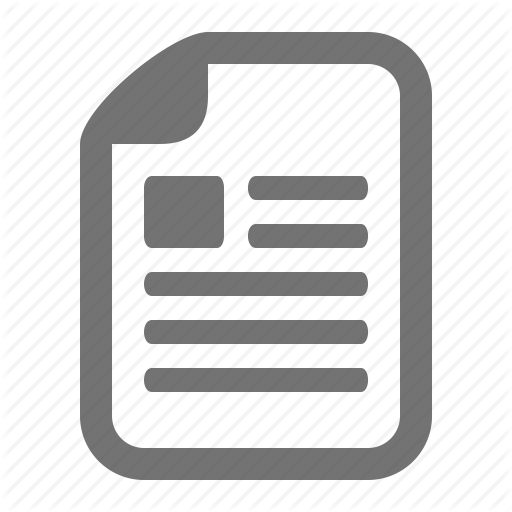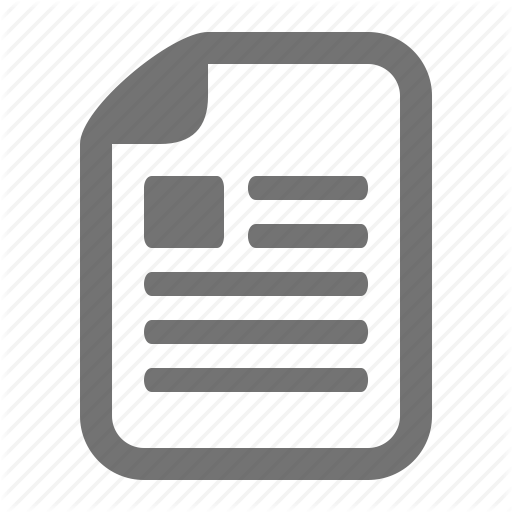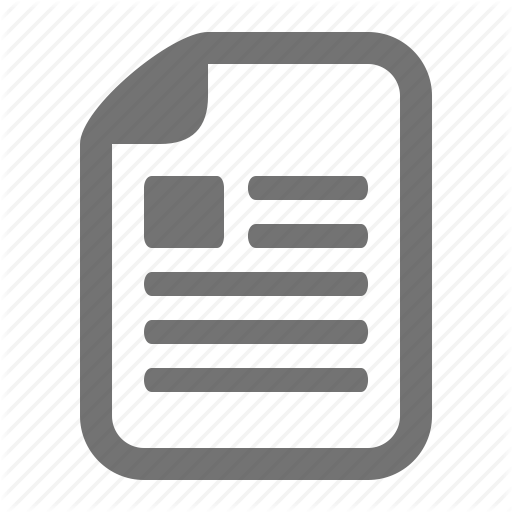BIS 261 Week 1 ilab
Content
BIS 261 Week 1 ilab
Click Link Below To Buy:
http://hwcampus.com/shop/bis-261-week-1-ilab/
Please you only accept the assignment if you can do in 4 hours and 30 mnts
STEP 1: Review background information
Review the case study on Acme Medical Data Storage LLC, given in the Scenario/Summary section above, paying careful attention to the characteristics of the company and its IS projects.
NOTE: This is an individual, not a team, iLab.
In your review, make notes specifying how you would rate the following characteristics of the company and project. These notes will not be turned in, but you will use them in conducting your analysis in Step 2 and preparing your memo in Step 3.
1. Is theproject technologyextremely stable, moderately stable, or experimental?
2. At the start of the project, are theproject requirementswell known, partially known, or mostly unknown (i.e., experimental)?
3. Is theproject domainheavily regulated, moderately regulated, or lightly regulated by government or other outside agencies?
4. Is thesize of the organizationlarge, mid-sized, or small?
5. Is theorganizational culturebureaucratic, mixed, or entrepreneurial?
6. Is theorganization's competitive environmentslow-paced, moderately paced, or fast-paced?
STEP 2: Analyze SDLC suitability
Based on the information given in the case study, analyze the suitability of a specific Software Development Life Cycle (SDLC) model for Acme Medical Data Storage LLC:
• If the last digit of your DSI Number is 0, 1, 2, or 3, use theWaterfall SDLC;
• If the last digit of your DSI Number is4, 5, or 6, use theUnified Process; and
• If the last digit of your DSI Number is 7, 8, or 9, use anagile SDLC (Scrum or XP).
In your analysis, examine your notes from your review of the project and organizational characteristics from Step 1, and make additional notes on the following points. These notes will not be turned in, but you will use them in preparing your memo in Step 3.
1. Is theproject technology a good or a poor fit for this SDLC model? (Recall from your reading that good fits are stable technology and waterfall; moderately stable technology and UP; and experimental technology and agile.)
2. Is the knowledge of project requirementsa good or a poor fit for this SDLC model? (Recall from your reading that well-known requirements are a good fit for waterfall; partially known requirements are a good fit for UP; and mostly unknown requirements are a good fit for agile.)
3. Is the degree of regulation of the project domaina good or a poor fit for this SDLC model? (Heavy regulation is a good fit for waterfall; moderate regulation, for UP; and light regulation for agile.)
4. Is thesize of the organizationa good or a poor fit for this SDLC model? (Good fits, generally, are large organizations and waterfall; mid size organizations and UP; and small organizations and agile.)
5. Is theorganizational culturea good or a poor fit for this SDLC model? (Good fits are bureaucratic organizations and waterfall; mixed organizations and UP; and entrepreneurial organizations and agile.)
6. Is theorganization's competitive environmenta good or a poor fit for this SDLC model? (Good fits are slow-paced and waterfall; moderately paced and UP; and fast-paced and agile).
STEP 3: Write memo to Bill
Write a one-to-two page memo to CIO, Bill Doors, by doing the following steps.
1. Download theBIS261_W1_iLab_Template.docxtemplate file from the iLab Filesfolder in Doc Sharing.
2. In the memo header, enter your name in theFromfield; enter the current date in theDatefield.
3. In the Introduction section, fill in the SDLC model that you are writing about in the blank (waterfall, Unified Process, or agile).
4. In theDescription of the SDLC Modelsection, briefly describe the SDLC model that you are writing about in the memo. Refer to any reading assignment in the textbook and to the Lecture for information about this SDLC model, then describe it in your own words; don't copy the description word for word from the textbook, the Lecture, or another source.
5. In the Pros for this SDLC Model section, list and briefly explain the factors that are favorable toward Acme adopting this SDLC model. These should be chosen from the factors that you identified as good fits for the SDLC model in your analysis in Step 2. You should write about at least one, but no more than three, favorable factors. If you identified more than three factors as good fits for the SDLC model, choose what you believe are the three most important ones to include in your memo.
6. In the Cons for this SDLC Model section, list and briefly explain the factors that are unfavorable toward Acme adopting this SDLC model. They should be chosen from the factors that you identified as poor fits for the SDLC model in your analysis in Step 2. You should write about at least one, but no more than three, unfavorable factors. If you identified more than three factors as poor fits for the SDLC model, choose what you believe are the three most important ones to include in your memo.
In your explanation of the favorable and unfavorable factors, refer to specific characteristics of Acme's organization and its projects that impact the SDLC model. You must make your analysis specific to Acme and its projects. Do not just write about the pros and cons of your SDLC model in general!
Be sure to cite any sources that you use, using the citation style given in the Syllabus.
STEP 4: Save and submit
Save your memo as a Microsoft Word file using the following naming convention:LastName_w1_ilab.docx.
Submit your assignment to the Dropbox, located at the top of this page. For instructions on how to use the Dropbox, read these step-by-step instructions.
System Analysis and Design Project
Name
Institution
Systems Analysis and Design Report for Acme
Introduction
The important concerns of Acme’s system analysis and design are the monitoring of success or failure of the system. There is a correlation of general system analysis and design best performances to the system successes. The system analysis project analyzes the system analysis and design best practices found in existing information system (IS) literature. The practices studied by IS researchers are compared to the practices proposed by the IS practitioners. The findings from the study confirm that many best practices such as consumer participation, executive management sustenance, clear statement of requirement, proper planning, realistic expectations and proper planning are challenging in the society (Dennis & Roth, 2014.
1. Description of Acme
During the development of the system design analysis, various organizations use standard steps called the system development life cycle (SDLC). It is used as a structured and common methodology for system development. The structure has four stages such as the planning, analysis, design, implementation, and maintenance. The stages have various advantages and disadvantages in a way that could be used to fit and optimize various kinds of projects in Acme.
Size of the organization
The Acme organization is large enough to fit SDLC model with employees about one million
Acme’s Environment
Analysis of Acme’s external environment entails the customers, competitors, technology, and social issues. With regards to customers, Acme has a large base of customers. For example, at least one quarter a million customers per week visit Acme. This can be attributable to the low prices with which Wal-Mart offers to its customers. Wal-Mart also offers a wide variety of merchandise in comparison to the other retailers (Cummings & Worley, 2004).
Organizational culture
The company has built an effective communication plan that explaining its objectives as well as rationale, the period and the cost of not changing. It does the Implement the communication plan timely and communicates often. The organization also sends out recurrent progress apprises. Focus the organization’s devotion forward and create an excitement about the new modifications to the SDLC.
Pros of SDLC
There are various problems facing the company for its perfect performance or deliverance to Acme. The slow running of the system at the peak hours during the morning and the afternoon hours influences the tasks performed by the Acme representatives. The technology in not up to date since it misses places to insert the email addresses possessed by many customers since in improves customer service operations.
Cons of SLDC
There is no immediate record of various transactions performed at the company and the data about the most recent transactions, and the previous should be kept in the database. There is difficulty in the tracking of the customers who are lagging behind in their payments and it would be perfect if the problems are solved (Dennis & Tegarden, 2015). There is also the lack of the software tracking the potential customers purchasing behavior within the company, but the user applies the use of databases.
There are positive impacts in the addressing of the problems and the opportunities facing the SLDC. The improvements of the slow running systems during the peak hours would improve the company output since many customers would be served at a short time. The improvement of the customer details insertion system would store all the information about the potential customers within the company to enable easy tracking.
2. Analysis
The analysis involves the identification of problems, and the possible recommendations and solutions for the problems in the Acme. System analysis gathers and interprets fact helping in the solution of various problems within the company. Problems may be internal or external created problems, and various companies have employee’s performing different roles in promoting various positive aspects in their developments.
Roles of various employees
Customer representative supervisor (user)
The customer representative supervisor has very many roles to play in the company. He acts as a coach to the employees to establish suitable goals activities and time lines. Supervisor delegates and provides ongoing guidance and support to the workers in their activities.
The supervisor mentors the employees because they understand the organization and the employee’s jobs better than the employee. The employees in the company must view the supervisor as a role model to enhance the progress of the company.
He has the responsibility of advocating for the Acme company telling the employees about the new policies and schedules form the management. The company employees may the frustrated by the induction of new policies to the company but the supervisors help in the clarification.
System analyst IS
System analyst is responsible in the analysis and designing business systems within organizations. They play a vital role in understanding the operations of the currently developed systems for specific objectives. A system analyst is like an architect in the development of the new systems providing the blue print in the development of the required system. System analyst is the most important personality in the development of the system by having the entire knowledge about the system building.
Chief information officer
In Acme Company the chief information officer helps in the critical interface between the business and ICT.They combine and understand instructional business needs and perspective of user requirements. They help in the management and planning of ICT including policy and practice in the development, planning, and budgeting.
Report on the technical feasibility of the project
The feasibility report is the measure of how beneficial or practical the development of information system is to the organization. The technical feasibility is a measure of the practicality of a specific technical solution and availability of technical recourses and expertise. In Acme Company, the development of the software to integrate and mark the customer’s purchasing power enables the tracking of the customer’s statistics.
Report on the economic feasibility of each project calculates ROI
Economic feasibility identifies cost and benefits associated with the system within the, Acme company. The process in concerned about the calculating future cash flow, while measuring the financial strength on the company. The economic feasibility enables the financial analysis and opportunities including the pending risks in the project.
Calculation of ROI
The return on investment (ROI) is the calculation measuring the average rate of return earning o the money invested in the project. It is a simple calculation that divides the project’s net benefits (total benefit-total cost) by the total cost.
ROI= Total benefits-Total Cost/Total costs
Report on operational feasibility of each project
Operational feasibility measures how well a solution meets the system requirements to solve issues while taking the advantage from opportunities discovered during analysis activity. In measures how the satisfaction of the system requirements related to each activity is analyzed.
Design
System analysis designs include steps in examining business situations with the purpose of improving it through perfect procedure and methods. It involves many types of systems supporting different types of projects.
Identify specific task involved in the chosen project and provide a CPM
The system analysis and design refers to the process of examining a business situation with the intention of improving procedures and methods. It relates to shaping organizations, improving performances and achieving objectives for profitability and growth. System analysis expands on the system and their relationships among subsystems and their contributions to reaching a specific goal (Lin, 2014). The analysis defines what the system can do while design show hoe to accomplish the goals and objectives of the project.
CPM of system analysis design is a critical path method showing the chronological process defining the critical and non-critical tasks with the intention of preventing possible problems. The Critical Path Method is good for the projects consisting of many activities acting in a complicated manner.
Provide the itemized list of money that will be spent for different aspects of the chosen project
The SLDC company system analysis and design budgeting should promote the short-and long-term financial viability of the company. All the budgeting system of the project evaluates the progress towards the budget balancing during the fiscal year providing tools to documents to increase or limit expenses and revenues. The company board uses the budgeting system to influence the decisions affecting the company policies. Before the project, there is a creation of work breakdown structure, identification of task patterns and calculating the critical path.
Tabulation of the project planning bearing affordable expenses rate considerations
Steps planning scheduling monitoring reporting
Step 1: creation of work breakdown structure
Step2:
Identify task patterns
Step 3:calculation of critical path
Management of operational project
References
Dennis, A., Wixom, B. H., & Roth, R. M. (2014). Systems analysis and design. John Wiley & sons.
Dennis, A., Wixom, B. H., & Tegarden, D. (2015). Systems analysis and design: An object-oriented approach with UML. John Wiley & Sons.
Hoffer, J. A. (2012). Modern Systems Analysis and Design, 6/e. Pearson Education India.
Lin, X. (2014). Electromagnetic transient analysis and novel protective relaying techniques for power transformer. Singapore: John Wiley & Sons, Inc.





















